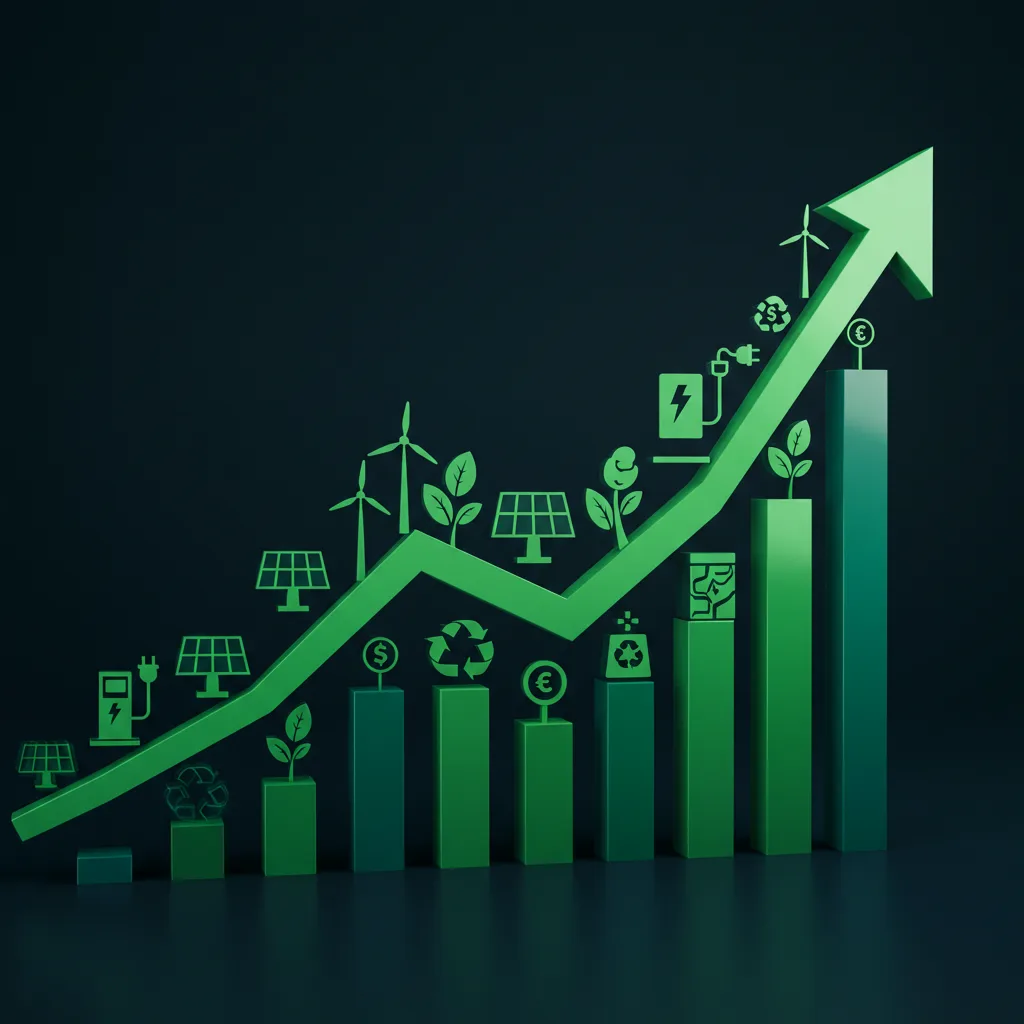Top 10 High-Return Green Investment Opportunities for 2025
Green investment opportunities for 2025 are unlocking significant financial rewards while driving real-world environmental progress. As sustainability mandates move from aspiration to action, investors now find high-return green investments across asset classes—from clean energy ETFs to impact funds—each backed by policy incentives and growing market demand. In this guide for EcoDweller.com, we outline the top ten sustainable investment themes and link to our practical resources, like 10 Easy Ways to Live Sustainably in a Small Apartment and 10 Must-Have Eco-Friendly Products for Beginners, for readers to deepen their green journey.

Why Sustainable Portfolios Are Poised for Growth
Global net-zero commitments by governments and corporations are directing trillions into eco-friendly asset classes. According to the UN Climate Change reports, renewable capacity is expected to expand by over 1,000 GW by 2025. Falling costs for solar, wind, and battery storage, plus regulatory incentives such as tax credits and green bond subsidies, underpin robust earnings forecasts for clean-tech investments.
Core Advantages of Eco-Friendly Portfolios
- Attractive Returns: Renewables are often the lowest-cost source of new power generation.
- Diversification: Low correlation with traditional equities and bonds.
- Impact Alignment: Finance projects that advance SDGs and climate targets.
- Policy Tailwinds: Benefit from subsidies, grants, and carbon pricing mechanisms.
- Stable Cash Flows: Infrastructure real assets can offer inflation-linked income.
Top 10 Sustainable Investing Themes for 2025
1. Diversified Clean Energy ETFs
Clean energy ETFs—like iShares Global Clean Energy (ICLN) and Invesco Solar ETF (TAN)—offer diversified exposure to solar, wind, and energy storage leaders. These funds simplify portfolio construction, reduce single-stock risk, and have historically delivered double-digit annualized returns amid the renewables boom.
2. Pure-Play Renewable Energy Equities
Equity stakes in companies such as First Solar, Enphase Energy, and Ørsted deliver focused exposure to capacity pipelines and long-term power purchase agreements. While volatility is higher, these stocks can generate outsized gains as green energy demand accelerates.
3. Fixed-Income Green Bonds
Sovereign and corporate green bonds fund projects from wind farms to energy-efficient buildings. They trade on par with traditional fixed income but provide the dual benefit of yield (around 3–5%) and climate impact, making them ideal for conservative sustainability allocations.
4. Voluntary Carbon Markets
High-quality carbon credits—backed by forestry or renewable energy projects—are increasingly traded on platforms like AirCarbon Exchange. Diversified carbon funds can capture price appreciation as corporate net-zero deadlines drive demand.
5. Green Hydrogen Infrastructure
Early ventures in green hydrogen production and electrolyser manufacturing are supported by multi-billion-dollar subsidies. Green hydrogen offers decarbonization pathways for heavy industry and transport, presenting long-term upside for first movers.
6. Agri-Tech and Regenerative Farming
Precision agriculture tools, biofertilizers, and regenerative practices boost yields while sequestering carbon. Investors can access this theme via ETFs like iShares Agribusiness ETF (FTAG) or private equity rounds in agri-tech startups. Explore more in our Sustainable Urban Gardening guide.
7. ESG-Driven Mutual Funds and ETFs
Broad ESG vehicles—such as Vanguard ESG U.S. Stock ETF (ESGV)—combine market returns with environmental, social, and governance criteria. These funds serve as core holdings for investors seeking sustainable portfolio benchmarks.
8. Impact-First Investment Funds
Impact funds targeting clean water, affordable housing, and renewable energy can yield competitive returns (8–15%) while delivering measurable social and environmental outcomes. Look for UN SDG alignment and third-party verification. Read our Zero Waste 101 guide for related insights.
9. Water and Wastewater Infrastructure
Blue bonds and utility equities address aging water systems and climate-driven demand. These assets offer inflation-linked dividends and low correlation, ideal for defensive segments of a sustainability portfolio.
10. EV Charging Network REITs
REITs owning charging stations—like those operated by ChargePoint—benefit from the rapid expansion of electric vehicles. Stable lease income and growth opportunities make this an attractive infrastructure play.
Portfolio Tip: Rebalance Regularly
Maintain target allocations across diversified ETFs, equities, bonds, and niche green assets. Annual rebalancing helps capture evolving market leadership.
Projected Returns Across Eco-Focused Assets
| Asset Class | 2025 Return Estimate | Risk Level | Portfolio Role |
|---|---|---|---|
| Clean Energy ETFs | 12–18% | Moderate | Growth Core |
| Renewable Energy Equities | 15–25% | High | Satellite Upside |
| Green Bonds | 3–5% | Low | Income Stability |
| Impact Funds | 8–15% | Moderate | Income & Impact |
| EV Charging REITs | 10–14% | Moderate | Infrastructure Growth |
How to Start Investing in Sustainable Themes
- Define Your Impact Goals: Identify priority areas like clean power, water resilience, or carbon reduction schemes.
- Assess Risk Tolerance: Blend stable income from green bonds with growth from ETFs and equities.
- Select Low-Cost Vehicles: Use index ETFs for broad exposure and specialist funds for targeted opportunities.
- Include Alternative Assets: Allocate a small tranche to carbon credits, impact debt, or venture-stage green tech.
- Monitor & Rebalance: Review allocations annually to capture new market leadership and adjust for concentration risk.
Frequently Asked Questions
How much should I allocate to green bonds?
Typically 10–20% of your total bond allocation; integrate green bonds into existing fixed-income buckets to maintain diversification.
Are carbon credits a safe investment?
Choose diversified funds with credits certified by Verra or Gold Standard to mitigate project-specific risk.
Can retail investors access green hydrogen?
Thematic ETFs and public equities in electrolyser manufacturers provide retail entry without requiring direct project financing.
Conclusion
High-return green investments in 2025 span diversified ETFs, targeted equities, fixed income, and alternative assets—each offering financial upside and environmental impact. Start with a clear strategy, leverage our beginner tips, and explore further in our American-focused guide. Share your portfolio experiences in the comments!

